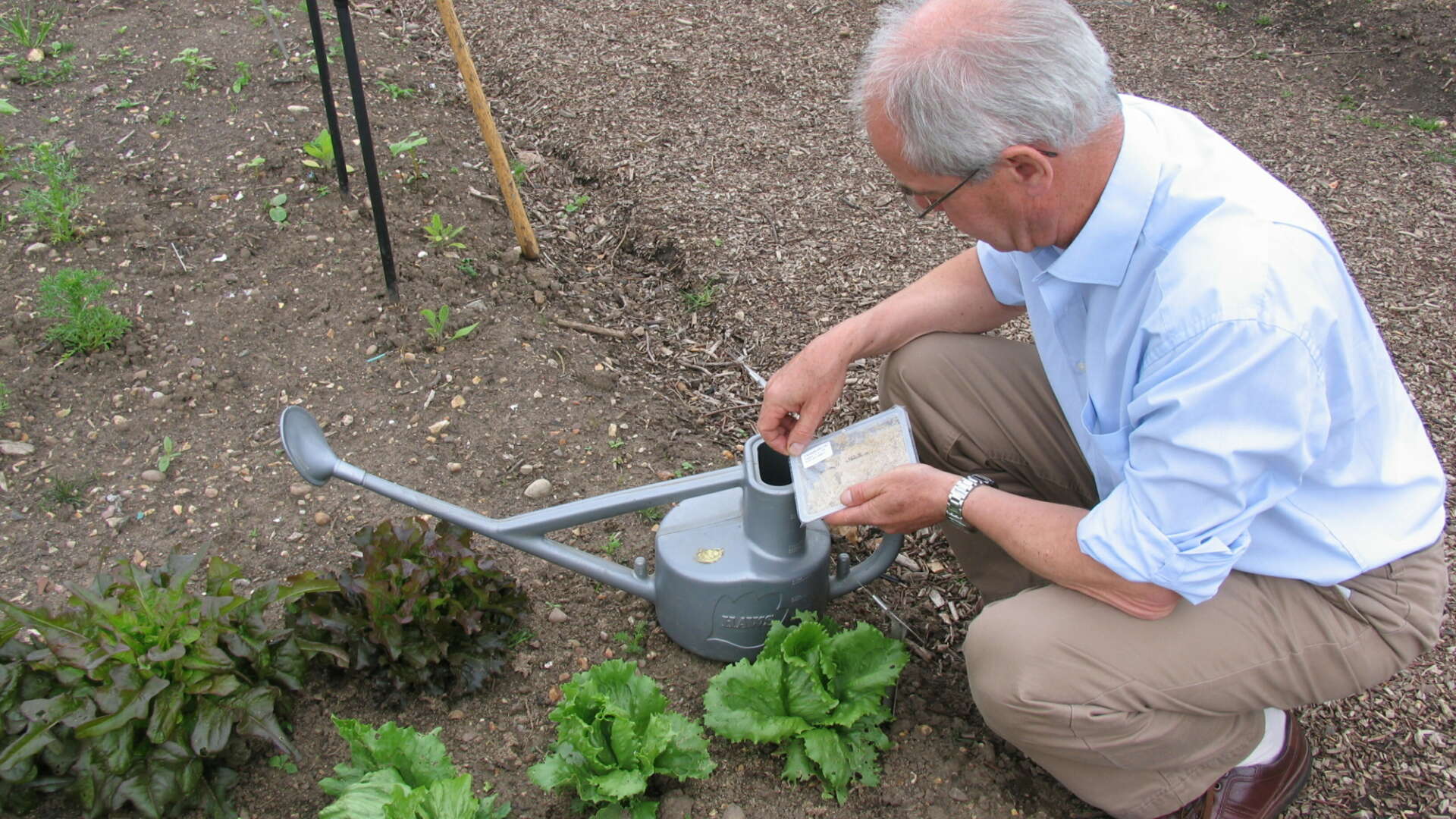How to use biological controls

What is biological control? 🔗
Biological controls, or biocontrols, are predators or parasites that attack or consume 'pests'. Most biocontrols are found in our gardens naturally, but boosting their numbers can help to manage pests.
The products sold to gardeners are not toxic to humans and of little risk to the environment.
The most common types of biological controls are mites, predatory wasps and microscopic worms called nematodes.
They are suitable for organic growers and have many advantages over synthetic pesticides. There is no risk of contaminating produce, and pests don’t develop resistance to biocontrols in the same way that they do to chemicals.
How to use biological controls 🔗
Apply a biocontrol just when you notice pest numbers increasing as most are less effective at dealing with severe infestations.
Biological controls are generally ordered in the post, so can take a few days to arrive and they should be used soon after receipt.
Mites and wasps are most effective when used in a greenhouse or polytunnel -when they're used outside they tend to move away from where you put them.
Nematodes are watered into the soil, and move much more slowly, so can be used outside without fear of them escaping.
Most biological controls function best at temperatures are between 10-30C, although nematodes can tolerate soil temperatures down to 5C. It’s important to stick to the instructions about how and when to apply them, or you risk wasting your money.
A biological control will not have the instant knock-down effect of a synthetic pesticide. As it’s a natural process, levels of the pest will take up to a week to decline.
Common pests and their biocontrol 🔗
Aphids
Aphids, commonly known as 'greenfly' or 'blackfly' are seen in large numbers clustered around tender young growth often causing young shoots to become weak and distorted.
If numbers of aphids are very high they can actually kill the plant they are living on.
When it comes to biological control of aphids, there are a range of predators to choose from. For growing under cover, the parasitic wasps, Aphidius or Aphidoletes are widely available control for amateur growers.
Aphids outside can be controlled by introducing lacewing larvae (Chrysoperla) in June, when the temperature averages around 14°C. Don’t forget to put up a lacewing habitat in August for the adults to hibernate in, to encourage them to stay in the garden to eat next year’s aphids.
Ladybirds (Cocinella) and their larvae are excellent native predators, available to buy if you don’t have any already present in the garden. Simply introduce to plants heavily infested with aphids and they will soon get to work.
Vine weevil
Both the adult beetles and the grubs attack plants. The fat white horseshoe grubs do the most damage by eating away at the roots during the spring and autumn. Adult beetles take notches out of the leaves as if somebody had attacked your plants with a hole punch.
Vine weevils can be controlled using a nematode preparation (often a mixture of Steinernema feltiae and Heterorhabditis bacteriophora). They only attack the grubs, so it is applied during the spring or early autumn.
The microscopic worms come in a sachet of beige paste and need to be mixed in thoroughly in a watering can. Use a coarse rose to ensure that all the nematodes can get through.
Slugs
The slugs you see on the surface are only a fraction of the whole population. Most live underground, and by burrowing deeply have a remarkable ability to survive cold or dry conditions.
Slugs can be controlled by applying a nematode preparation (Phasmarhabditis hermaphrodita) that is mixed into the watering can and watered into the soil. Treatment should be effective for at least six weeks.
Sciarid fly
Sciarid flies or fungus gnats are those little flies that jump around or hover above the compost in the greenhouse. They cause the most trouble under ground, where the larval maggots eat away at the roots and stems.
The mite, Hypoaspis miles, is highly effective at reducing populations of sciarid flies. It arrives in a pepper pot shaker and is shaken onto the soil surface.
Are biocontrols worth it? 🔗
Biocontrols have been used for decades on commercial glasshouse crops. However, for amateur gardeners, they can be a bit pricey so we generally recommend using them on particularly precious plants.
In some cases, the amounts of biocontrol received are for larger areas than you would need. Reduce the cost by sharing the product around with other gardeners, taking their short shelf life into consideration.
Remember they’re not a substitute for good husbandry – a sensible watering regime, good compost and crop hygiene can do much to curb pest outbreaks in the first place.